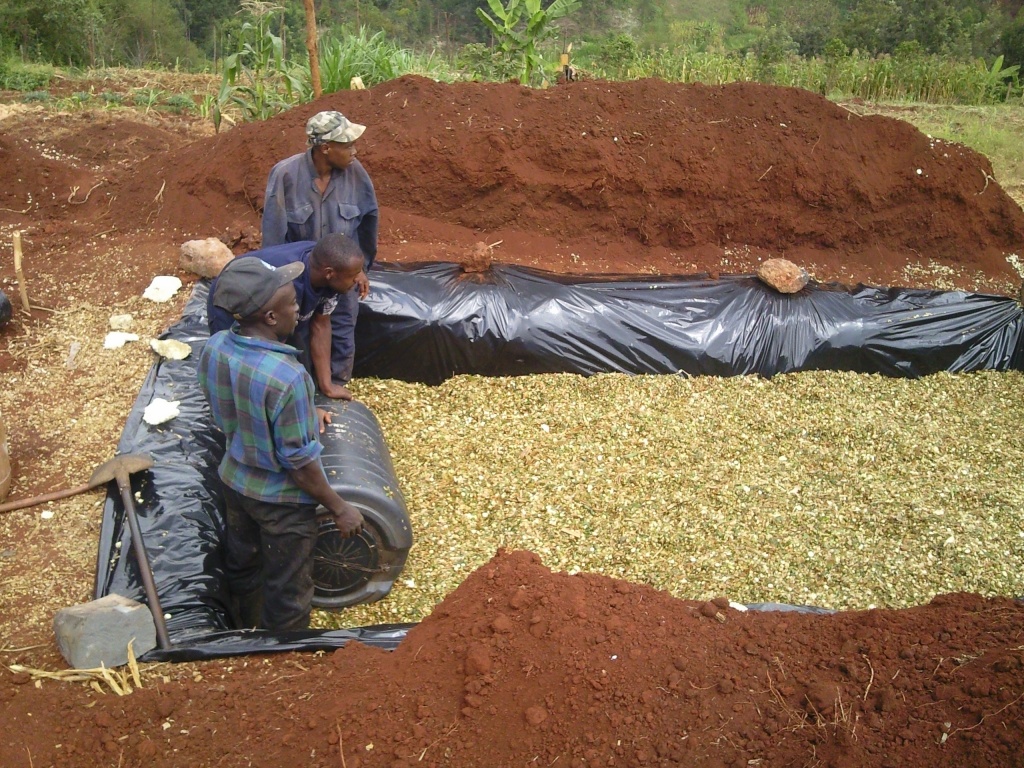Nandi farmer Cyrus Kitur is reaping double benefits from his two acre maize farm by growing maize for subsistence use as food and fodder for his livestock.
In this he has been able to increase his milk yields fourfold from eight to 32 liters a day while at the same time feeding his family of six comfortably.
The farmer achieves this by dense planting of three seeds per hole of maize as opposed to the normal one seed and reducing plant spacing by half.
“The two practices helped me increase fodder quantity by about 100 per cent which I used to make silage for the cows,” said Kitur.
“In the subsequent years to 2017, I was planting maize only for subsistence and a few for commercial purposes; I was reluctant to chop my maize crop to make silage for my cows. But after doing some calculations, I realized I could make more money from milk than dry grain maize. Dry season is no longer a challenge to me,”
Related
Vihiga farmers adopt maize that kills ‘purple witch’
Maize farmers bypass volatile markets, sell directly to millers
Yellow maize could be the promised solution for Kenya\'s fodder woes
According to the Kenya Agricultural and Livestock Research Organization, the use of maize forage for animal feeding is becoming very important for on small scale mixed farms in Kenya. This type of forage contributes up to 24 per cent of the total cattle feed thus making maize production for grain and fodder equally significant.
In April 2017, Cyrus procured 20kg of maize seeds from the Kenya Seed Company, Eldoret branch at Sh1800 per 10kg bag. He purchased two 50kg bags of DAP fertilizer at the National Cereals and Produce Board in the same town which he transported using his pick up to his farm in Kabiyet area.
As for land preparation he leased a neighbor’s tractor to till the land twice at a cost of Sh2,000 per acre. At the onset of the rains on 15th April, he engaged five casuals who used hoes to drill holes at spacing of 30 by 30cm as compared to the normal 60 by 75cm.
The planting session was characterized by song and dance with a few breaks to quench thirst and sips of two to three porridge cups.
After planting was complete, the farm was sprayed with a pre-emergent herbicide to prevent weeds from germinating.
“It is appropriate to apply the herbicide before the maize germinates so as not to kill the young plants, this also ensures the plants grow weed free and by the time the weeds sprout the maize will be mature enough to act as cover crop,” said Kitur.
In 2017 August, Kitur thinned the maize from his two acre farm for silage making leaving the rest for late harvest. He hired two casuals who dug two separate pits at a cost of Sh3000. Each dimension of the pit was 72 cubic feet enough to hold 1000kg of fresh, chopped material. He purchased 20 meters of polythene sheeting at a cost of Sh250 per sheet for lining on the walls of the pits so as to avoid forage from coming into contact with the soil.
A 50kg of forage cut into one inch were emptied into the pits with even distribution. Kitur added molasses to the stored fodder at the ratio of 1:3. One liter of molasses was mixed with three liters of water and sprinkled over the chopped materials. The farmer used a garden sprayer to distribute the solution evenly allowing the silage to acid quickly and prevent rotting.

The silage making process
“It is important to compact the fodder after every addition to the pit to drive out all the air, this minimizes attack by fungi on bacteria inside” said Kitur.
The farmer is currently feeding his cows with the stored fodder twice every day, in the morning and in the evening. Each consumes approximately 30kg of the feed per day.
“To ensure that the milk has no silage smell, feed after milking or at least three hours before milking” said Kitur.
The farmer gets an average of 32 liters per day from the cows which he sells to Kabiyet dairies at a cost of Sh32 per liter. This earns him Sh1024 per day.
Besides the silage, he harvested 20, 90kg bags of maize grains for his subsistence use in 21st November 2017.
















Comments powered by CComment